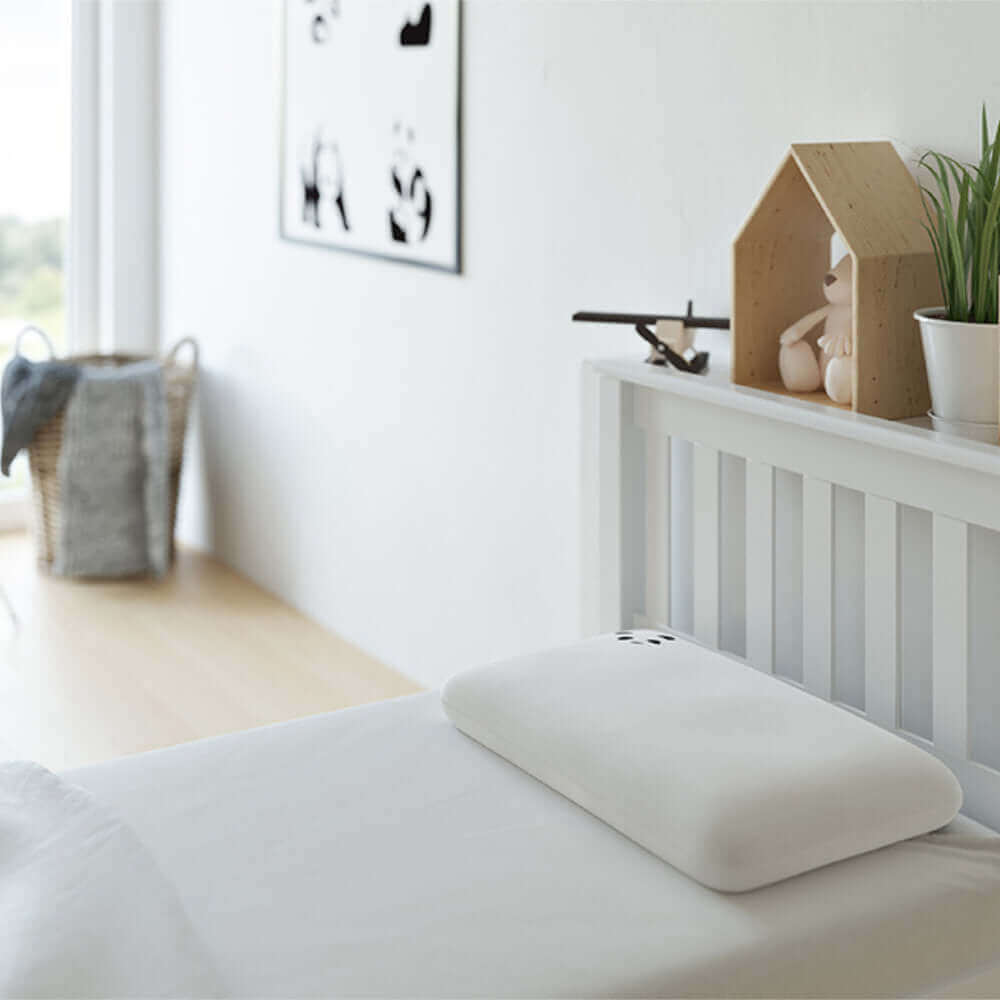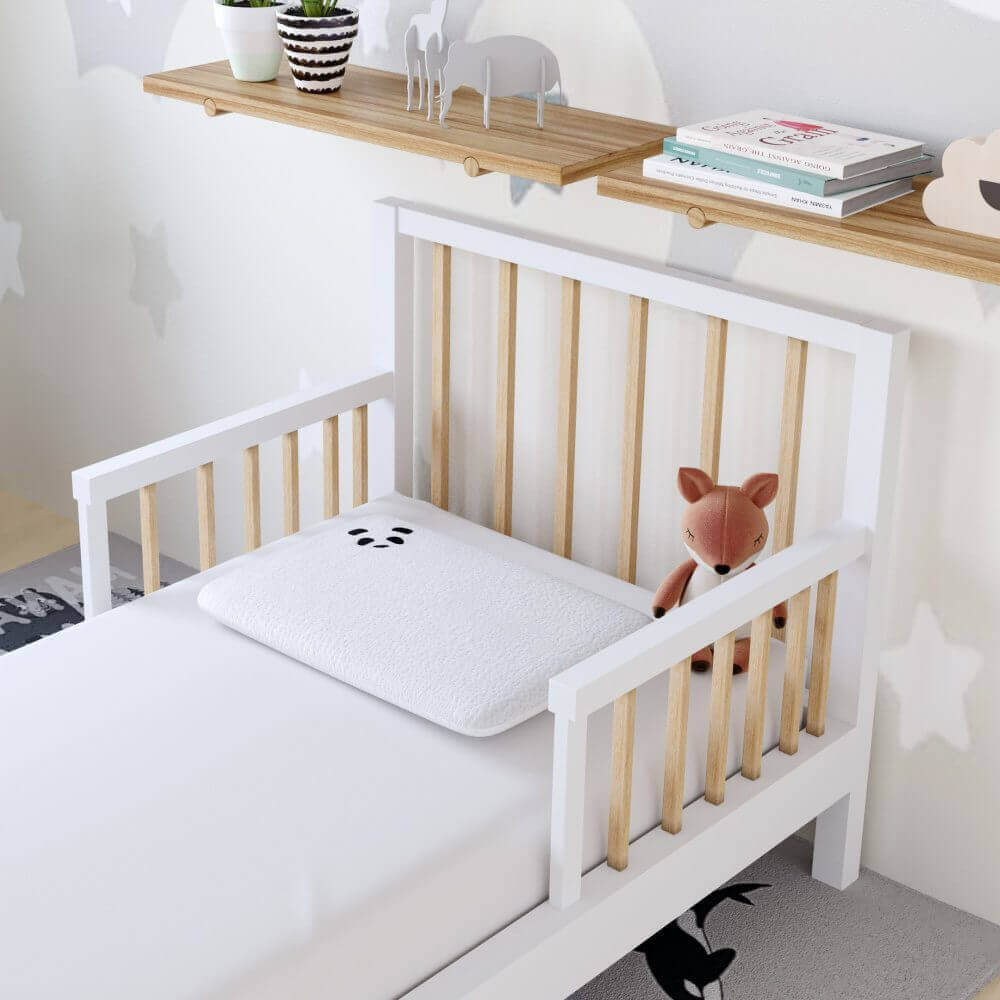Our orthopaedic expert, Bethany Lawrence, reveals that too much time online is proving to be a real pain in the neck. Lawrence reveals that she treats clients as young as six for neck and spinal problems.
So, what part does technology play in all of this, and how does it impact the quality and quantity of their sleep? Let’s dive in!
How does technology cause neck problems?
If you’re reading this in an office, coffee shop, or on your morning commute, take a look around. Chances are you'll see someone with their head bowed down, looking at their phone. A Florida Chiropractor, Dr. Dean L. Fishman, originally coined the term, ‘text neck’, also known as the phenomenon, ‘tech neck’, referring to the motion of looking down and stressing your muscles and tissue structures of the cervical spine. 'Prolonged phone/technology usage results in a forward head posture; for every inch that your head moves forwards it puts an additional 10 pounds of weight through your neck and associated structures. Our cervical spine (neck) is not meant to withstand such force outside of its usual neutral position, which means that it can result in muscular and ligamentous strain,' Lawrence goes on to warn, 'This condition worsens the longer people spend on their devices.' When you look down at a screen, your muscles in the back of the neck work hard to keep your head up. Over the day, they get tired, resulting in a ‘tech neck’. A recent study revealed that in the UK, nearly a third of people spend over 3 hours a day on their phones and check them on average every 12 minutes of the waking day – that’s a lot of hunching over technology and our necks, especially those of our younger ones, are feeling the strain.

What are the symptoms of ‘tech neck’?
If your little one is complaining about any of the following, they could be experiencing ‘tech neck’:
-
Headaches – 'Many of my youngest clients often suffer from headaches,' Bethany Lawrence tells us, which can be caused by aching necks.
-
Stiffness in the neck – 'Keeping your neck in one position for a long time can lead to stiffness and immobility', Lawrence explains.
-
Neck Spasms – 'Muscle strain can lead to neck spasms', our orthopaedic expert tells us, 'these can be very uncomfortable for little ones'.
-
Aching in the lower shoulders and back – This can be caused by hunching over for long periods of time.
How do neck problems affect kids’ sleep?
Sore, stiff necks can make it very difficult to get comfortable and settle into sleep. If little ones drift off ok, spasms can often wake them up – and more discomfort can arise from staying in one position for too long. 'If you are suffering from neck pain, it can affect your ability to find a comfortable sleep position to support your cervical spine properly. We also know that levels of inflammation can be higher at night time and that most pain/stiffness is relieved with movement, therefore remaining in a sedentary state and often unsupported position for a prolonged period of time overnight can further affect both the quality and duration of your sleep” says Bethany. Over time, this can severely affect wellbeing, resulting in irritability and low immunity. The best thing to do is seek the advice of a doctor to address the problem and take measures to reduce their symptoms.
What are some of the things that can help ease neck pain for little ones?
The good news for little ones with sore necks is there are plenty of ways they can nip the pain in the bud. Lawrence explains, 'There are simple exercises they can do at home that will help increase mobility, reduce stiffness and resolve muscle strain.' Beyond that, certain lifestyle changes can be made to not only resolve neck problems but stop them from coming back.
Here's our orthopaedic expert's top tips for allowing kids to enjoy technology while keeping life comfortable:
- It’s all about balance – Technology is not going anywhere, though there is a way to strike a balance – monitoring time on phones and screens is one of the most effective and simple ways to reduce ‘tech neck’ and create a healthier lifestyle. Try engaging little ones in all of the wonderful things they can do offline. Scheduling ‘technology time’ and ensuring they stick to specific, shorter sessions will prevent the stiffness and strain that comes from long periods of hunching over.
- Pillow support – An orthopaedic-grade pillow that keeps the spine and neck aligned will give them the support they need for a comfortable night’s sleep. Memory foam is a great option, as the advanced foam naturally contours to their sleeping position. The Panda Bamboo Kids™ Pillow is a great choice, with different loft sizes to ensure healthy growth and development for all ages.
- Regular movement – Encouraging little ones to move regularly, whether by playing outside, walking or doing neck exercises at home, can improve circulation and mobility, reducing and preventing further neck problems. A professional orthopaedic expert can help advise on the best movements for your little one based on their symptoms.

The Take Away
Technology is an unavoidable part of modern life, being at the core of how little ones learn, interact and entertain themselves. However, too much time online is leading to neck problems, disrupting their sleep. Simple measures such as restricting their time online, encouraging regular movement and upgrading their pillow to one with orthopaedic-grade support can help keep life and bedtime healthy and comfortable.
Ready to upgrade your child’s pillow?
Shop the supportive Panda Kid’s Range and keep them sleeping soundly.

![[MattressTopper] Panda London Memory Foam Bamboo Mattress Topper package box](http://pandalondon.com/cdn/shop/files/Bamboo_Mattress_Topper_Package_Box.webp?v=1742301823&width=1500)
![[MattressTopper] Panda London Memory Foam Bamboo Mattress Topper on the floor](http://pandalondon.com/cdn/shop/products/Panda-Memory-Foam-Bamboo-Mattress-Topper-Yoga-e1624045454555.jpg?v=1758795458&width=1000)
![[MattressTopper] Bamboo Mattress Topper Lifestyle Image with Memory Foam Pillows Product Page](http://pandalondon.com/cdn/shop/files/Bamboo_Mattress_Topper_Lifestyle_Image_with_Memory_Foam_Pillows_Product_Page.webp?v=1758795458&width=800)
![[MattressTopper] Bamboo Mattress Topper Lifestyle Image with Bamboo Pillows In the Garden room Product Page](http://pandalondon.com/cdn/shop/files/Bamboo_Mattress_Topper_Lifestyle_Image_with_Bamboo_Pillows_In_the_Garden_room_Product_Page.webp?v=1758795458&width=800)
![[MattressTopper] Panda London Memory Foam Bamboo Mattress Topper side](http://pandalondon.com/cdn/shop/files/Mattress_Topper_Isolated_-_resized.jpg?v=1758795458&width=800)
![[HybridMattressPro] Hybrid_Bamboo_Mattress_Pro_Product_Image_2026](http://pandalondon.com/cdn/shop/files/Hybrid_Bamboo_Mattress_Pro_Product_Image_2026.webp?v=1764944771&width=1000)
![[HybridMattressPro] Breathable Hybrid Bamboo Mattress](http://pandalondon.com/cdn/shop/products/Breathable-Hybrid-Bamboo-Mattress.jpg?v=1764944771&width=1920)
![[HybridMattressPro] Hybrid Bamboo Mattress Pro Cover Zip](http://pandalondon.com/cdn/shop/files/Hybrid_Bamboo_Mattress_Cover.jpg?v=1764944771&width=800)
![[HybridMattressPro] Panda Hybrid Bamboo Mattress Pro](http://pandalondon.com/cdn/shop/files/Hybrid_Bambo_Memory_Foam_Mattress_-_BioCell_Foam_x.jpg?v=1764944771&width=800)
![[HybridMattressPro] Couple on a Hybrid Bamboo Mattress Pro](http://pandalondon.com/cdn/shop/files/Hybrid_Bamboo_Mattress_Couple.jpg?v=1764944771&width=800)
![[CloudDuvet] Panda London The Cloud Bamboo Duvet Packaging](http://pandalondon.com/cdn/shop/products/Panda-London-The-Cloud-Bamboo-Duvet-Panda-Life-scaled_00a651ad-4ca3-4105-b520-12a94c1a4f71.jpg?v=1713363286&width=1920)
![[CloudDuvet] Panda London The Cloud Bamboo Duvet Rolled](http://pandalondon.com/cdn/shop/products/Duvet-Listing-Images03.jpg?v=1764079307&width=1000)
![[CloudDuvet] Panda London The Cloud Bamboo Duvet Girl Huggin a Duvet on the Bed](http://pandalondon.com/cdn/shop/files/Cloud_Bamboo_Duvet_-_Lady_Hugging_it_on_Bed_LifestyleImage.jpg?v=1764079307&width=1000)
![[CloudDuvet] Panda London The Cloud Bamboo Duvet Guy In the Air with Cloud Bamboo Duvet](http://pandalondon.com/cdn/shop/files/GuyonaHybridBambooMattresswithCloudDuvet.jpg?v=1764079307&width=2000)
![[CloudDuvet] Panda Cloud Duvet Winter on the bed lifestyle image](http://pandalondon.com/cdn/shop/files/Panda_Cloud_Duvet_Winter_on_the_Bed_Lifestyle-1_image.jpg?v=1764079307&width=1000)
![[BBWhite] White 100% Bamboo Bedding](http://pandalondon.com/cdn/shop/files/Pure_White_Full_Bed.webp?v=1719581797&width=1000)
![[BBWhite] White 100% Bamboo Bedding Texture](http://pandalondon.com/cdn/shop/files/100_Bamboo_Bedding_-_Pure_White_-_Close_Up_02.webp?v=1762879591&width=1000)
![[BBWhite] White 100% Bamboo Bedding Woman in bed sleeping](http://pandalondon.com/cdn/shop/files/100-Bamboo-Bedding-Set-Pure-White-BB.webp?v=1762879591&width=768)
![[BBWhite] White 100% Bamboo Bedding Woman Duvet cover buttons](http://pandalondon.com/cdn/shop/files/hand_and_buttons_1.webp?v=1762879591&width=1000)
![[BBWhite] White 100% Bamboo Bedding Woman in bed looking and smiling-](http://pandalondon.com/cdn/shop/files/SatonMadeBed-White100_BambooBedding-white_-_BB_SideShot1000x1000.webp?v=1762879591&width=980)
![[BBUrbanGrey] Urban Grey 100% Bamboo Bedding](http://pandalondon.com/cdn/shop/files/Made_Bed_-_Urban_Grey_-_Wide_Shot_2_1_1.webp?v=1762880019&width=1000)
![[BBUrbanGrey] Cloud Duvet Urban Grey 100% Bamboo Bedding Set](http://pandalondon.com/cdn/shop/files/Cloud_Duvet_-_Grey_-_Close_up_2.webp?v=1762880019&width=1000)
![[BBUrbanGrey] Urban Grey 100% Bamboo Bedding Set Woman sitting on the bed](http://pandalondon.com/cdn/shop/files/Sat_in_Bed_-_Grey_100__Bamboo_Bedding_-_Wide_Shot.webp?v=1762880019&width=1000)
![[BBUrbanGrey] Urban Grey 100% Bamboo Bedding Set Woman Duvet buttons Panda London](http://pandalondon.com/cdn/shop/files/hand_buttons_grey_bedding_1.webp?v=1762880019&width=1000)
![[BBUrbanGrey] Woman Sitting on the Bamboo Bedding with coffee](http://pandalondon.com/cdn/shop/files/SatonMadeBed-White100_BambooBedding-SideShot1000x1000.jpg?v=1762880019&width=1000)
![[BBNavyBlue] Deep Sea Navy Blue 100% Bamboo Bedding](http://pandalondon.com/cdn/shop/files/Made_Bed_-_Navy_-_Wide_Shot_3_copy.webp?v=1762879591&width=1000)
![[BBNavyBlue] Deep Sea Navy Blue 100% Bamboo Bedding Texture](http://pandalondon.com/cdn/shop/files/Cloud_Duvet_-_Navy_-_Close_up_2.webp?v=1762880019&width=1000)
![[BBNavyBlue] Deep Sea Navy Blue 100% Bamboo Bedding Woman Sitting on the bed](http://pandalondon.com/cdn/shop/files/Sat_Up_in_Bed_-_Navy_100__Bamboo_Bedding_-_Hands_on_Bed.webp?v=1762880019&width=1000)
![[BBNavyBlue] Deep Sea Navy Blue 100% Bamboo Bedding Duvet Cover Buttons](http://pandalondon.com/cdn/shop/files/Cloud_Duvet_Cover_Buttons_-_Deep_Sea_Navy.webp?v=1762880019&width=1000)
![[BBNavyBlue] Deep Sea Navy Blue 100% Bamboo Bedding Woman sitting on the bed looking away](http://pandalondon.com/cdn/shop/files/SatonMadeBed-White100_BambooBedding-SideShot1000x1000-001.webp?v=1762880019&width=980)
![[BBPink] Vintage Pink Blue 100% Bamboo Bedding](http://pandalondon.com/cdn/shop/files/Made_Bed_-_Pink_-_Wide_Shot_copy.webp?v=1762879591&width=1000)
![[BBPink] Vintage Pink Texture 100% Bamboo Bedding](http://pandalondon.com/cdn/shop/files/Cloud_Duvet_-_Pink_-_Close_up_2.webp?v=1762880019&width=1000)
![[BBPink] Vintage Pink Woman Sitting on the 100% Bamboo Bedding](http://pandalondon.com/cdn/shop/files/Sat_Up_in_Bed_-_Pink_-_Hands_on_Bed.webp?v=1762880019&width=1000)
![[BBPink] Vintage Pink Woman Sitting on the 100% Bamboo Bedding Duvet Cover](http://pandalondon.com/cdn/shop/files/Cloud_Duvet_Cover_Buttons_-_Vintage_Pink.webp?v=1762880019&width=1000)
![[BBPink] Vintage Pink Woman Sitting on the 100% Bamboo Bedding Woman looking far away](http://pandalondon.com/cdn/shop/files/SatonMadeBed-White100_BambooBedding-SideShot1000x1000-001_Vintage_Pink.webp?v=1762880019&width=980)
![[BBGrey] Light Grey 100% Bamboo Bedding](http://pandalondon.com/cdn/shop/files/Made_Bedding_in_Bedroom_-_Urban_Grey_-_Wide_Shot.webp?v=1762879591&width=1000)
![[BBGrey] Light Grey 100% Bamboo Bedding texture](http://pandalondon.com/cdn/shop/files/Texture17.webp?v=1762880019&width=1000)
![[BBGrey] Light Grey 100% Bamboo Bedding with Woman smiling](http://pandalondon.com/cdn/shop/files/Sat_Up_in_Bed_-_Grey_-_Hands_on_Bed.webp?v=1762880019&width=1000)
![[BBGrey] Light Grey 100% Bamboo Bedding with Duvet Cover buttons](http://pandalondon.com/cdn/shop/files/Cloud_Duvet_Cover_Buttons_-_Quiet_Grey.webp?v=1762880019&width=1000)
![[BBGrey] Light Grey 100% Bamboo Bedding with Woman smiling and sitting coffee](http://pandalondon.com/cdn/shop/files/SatonMadeBed-White100_BambooBedding-SideShot1000x1000-002-_Grey.webp?v=1762880019&width=980)
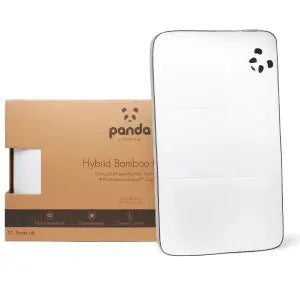 Hybrid Bamboo Pillow
Hybrid Bamboo Pillow Memory Foam Bamboo Pillow
Memory Foam Bamboo Pillow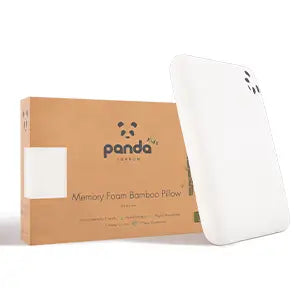 Kids Memory Foam Bamboo Pillow
Kids Memory Foam Bamboo Pillow Baby Memory Foam Bamboo Pillow
Baby Memory Foam Bamboo Pillow Panda Cloud Duvet
Panda Cloud Duvet Bamboo Summer Duvet
Bamboo Summer Duvet Kids Cloud Duvet
Kids Cloud Duvet
![[KidsDuvet] Kids Cloud Duvet product image](http://pandalondon.com/cdn/shop/products/Panda-London_Kids_Duvet-scaled.jpg?v=1713363289&width=1920)
![[KidsDuvet] Kids Cloud Duvet on a cotbed](http://pandalondon.com/cdn/shop/files/Kids-KidsCloudDuvet.jpg?v=1750342405&width=2000)
![[KidsDuvet] Kids Cloud Bamboo Duvet Folded](http://pandalondon.com/cdn/shop/files/Kids_Cloud_Bamboo_Duvet_-_Folded_-_Logo_Shown_-_White_Background_Kids_Duvet.jpg?v=1750342405&width=1000)
![[KidsDuvet] Kids_CloudBambooDuvet-CornerLip-WhiteBackground](http://pandalondon.com/cdn/shop/files/Kids_CloudBambooDuvet-CornerLip-WhiteBackground.jpg?v=1750342405&width=2000)
![[KidsDuvet] Kids_Cloud_Bamboo_Duvet_-_Padded_-_Close_Up_Shot_Kids](http://pandalondon.com/cdn/shop/files/Kids_Cloud_Bamboo_Duvet_-_Padded_-_Close_Up_Shot_Kids.jpg?v=1750342405&width=1000)
![[KidsDuvet] Kids_CloudBambooDuvetRolled-WhiteBackground_1](http://pandalondon.com/cdn/shop/files/Kids_CloudBambooDuvetRolled-WhiteBackground_1.jpg?crop=region&crop_height=1697&crop_left=151&crop_top=0&crop_width=1697&v=1750342405&width=2000)
![[KidsDuvetUKSingle] UK_Single_kids_-_Summer_Cloud_Duvet_Main_Image](http://pandalondon.com/cdn/shop/files/UK_Single_kids_-_Summer_Cloud_Duvet_Main_Image.webp?v=1750342648&width=1000)
![[KidsDuvetUKSingle] UK_Single_Kids-Image_Summer_Bamboo_Duvet_Lifestyle_image-1](http://pandalondon.com/cdn/shop/files/UK_Single_Kids-Image_Summer_Bamboo_Duvet_Lifestyle_image-1.webp?v=1750342794&width=1000)
![[KidsDuvetUKSingle]UK_Single_Summer_Duvet_-_Duvet_Folded_Isolated-webp](http://pandalondon.com/cdn/shop/files/UK_Single_Summer_Duvet_-_Duvet_Folded_Isolated-webp.webp?v=1750342794&width=1000)
![[KidsDuvetUKSingle] UK_Single_Summer_Duvet_-_Snuggle_Snaps_Bag_02-webp](http://pandalondon.com/cdn/shop/files/UK_Single_Summer_Duvet_-_Snuggle_Snaps_Bag_02-webp.webp?v=1750343051&width=1000)
![[KidsDuvetUKSingle] UK_Single_Kids_-_Summer_Cloud_Snuggle_Snaps_Image_Webp](http://pandalondon.com/cdn/shop/files/UK_Single_Kids_-_Summer_Cloud_Snuggle_Snaps_Image_Webp.webp?v=1764079307&width=1500)
![[KidsDuvetAllSeason] Kids Duvet UK Single 10.5 tog rating all season one](http://pandalondon.com/cdn/shop/files/Kids_All_Seasn_10.5_Tog_Panda_Cloud_Duvet_Main_Image.jpg?v=1750685858&width=1920)
![[KidsDuvetAllSeason] Texture Duvet Cloud Panda](http://pandalondon.com/cdn/shop/files/Kids_All_Season_Panda_Cloud_Bamboo_Duvet_-_Padded_-_Close_Up_Shot.jpg?crop=region&crop_height=1900&crop_left=169&crop_top=0&crop_width=1900&v=1750686755&width=2239)
![[KidsDuvetAllSeason] Rolled Duvet All Season 10.5 tog](http://pandalondon.com/cdn/shop/files/Kids_All_Season_Duvet_Image_002_Panda_Cloud_Duvet.jpg?v=1750686755&width=1000)
![[KidsDuvetAllSeason] Panda Cloud Duvet Corner](http://pandalondon.com/cdn/shop/files/Kids_All_Season_Panda_Cloud_Cloud_Bamboo_Duvet_-_Corner_Lip_-_White_Background.jpg?v=1750686755&width=4848)
![[KidsDuvetAllSeason] All season Panda Cloud Duvet](http://pandalondon.com/cdn/shop/files/Kids_All_Season_Duvet_UK_Single_Kids-Image_Summer_Bamboo_Duvet_Lifestyle_image-1_webp.jpg?v=1750686755&width=1000)
![[FSKidsW] Kids_Full_Bamboo_Bedding_Set_Pure_White_-_jpg](http://pandalondon.com/cdn/shop/files/Kids_Full_Bamboo_Bedding_Set_White_-_jpg.jpg?v=1745334928&width=800)
![[FSKidsW] Fitted Sheet Kids Bamboo Bedding Texture White](http://pandalondon.com/cdn/shop/files/FittedSheetKidsBambooBeddingTextureWhite.webp?v=1745334928&width=1000)
![[FSKidsW] Kids-Bamboo_Bedding_Duvet_Cover_White](http://pandalondon.com/cdn/shop/files/Kids-Bamboo_Bedding_Duvet_Cover_White.webp?v=1745334928&width=1000)
![[all] Kids_Bamboo_Bedding_Set](http://pandalondon.com/cdn/shop/files/Kids_Bamboo_Bedding_Set.webp?v=1745334928&width=1225)
![[all] Kids_Bamboo_Bedding_Set-1](http://pandalondon.com/cdn/shop/files/Kids_Bamboo_Bedding_Set_9329c9a8-b31d-4925-87d3-390d16a021d0.webp?v=1745334928&width=1225)
![[FSKidsG] Kids_Full_Bamboo_Bedding_Set_Grey_-_jpg](http://pandalondon.com/cdn/shop/files/Kids_Full_Bamboo_Bedding_Set_Grey_-_jpg.jpg?crop=region&crop_height=679&crop_left=60&crop_top=0&crop_width=679&v=1745334928&width=800)
![[FSKidsG] Fitted Sheet Kids Bamboo Bedding Texture Quiet Grey](http://pandalondon.com/cdn/shop/files/FittedSheetKidsBambooBeddingTextureQuietGrey.webp?v=1745334928&width=1000)
![[FSKidsG] Kids-Bamboo_Bedding_Duvet_Cover_Grey](http://pandalondon.com/cdn/shop/files/Kids-Bamboo_Bedding_Duvet_Cover_Grey.webp?v=1745334928&width=1000)
![[FSKidsP] Kids_Full_Bamboo_Bedding_SetPink_-_jpg](http://pandalondon.com/cdn/shop/files/Kids_Full_Bamboo_Bedding_SetPink_-_jpg.jpg?crop=region&crop_height=679&crop_left=60&crop_top=0&crop_width=679&v=1745334928&width=800)
![[FSKidsP] Fitted Sheet Kids Bamboo Bedding Texture Vintage Pink](http://pandalondon.com/cdn/shop/files/FittedSheetKidsBambooBeddingTextureVintagePink.webp?v=1745334928&width=1000)
![[FSKidsP] Kids-Bamboo_Bedding_Duvet_Cover_Pink](http://pandalondon.com/cdn/shop/files/Kids-Bamboo_Bedding_Duvet_Cover_Pink.webp?v=1745334928&width=1000)
![[FSKidsN] Kids_Full_Bamboo_Bedding_Set_Deep_Sea_Navy_-_jpg](http://pandalondon.com/cdn/shop/files/Kids_Full_Bamboo_Bedding_Set_Deep_Sea_Navy_-_jpg.jpg?crop=region&crop_height=679&crop_left=60&crop_top=0&crop_width=679&v=1745334928&width=800)
![[FSKidsN] Kids_Full_Bamboo_Bedding_Set_Deep_Sea_Navy_-_jpg_Texture](http://pandalondon.com/cdn/shop/files/Kids_Full_Bamboo_Bedding_Set_Deep_Sea_Navy_-_jpg_Texture.webp?v=1745334928&width=1000)
![[FSKidsN] Kids-Deep_Sea_Navy_Bamboo_Bedding_Duvet_Cover-jpg](http://pandalondon.com/cdn/shop/files/Kids-Deep_Sea_Navy_Bamboo_Bedding_Duvet_Cover-jpg.webp?v=1745334928&width=1000)
![[FSKidsUG] Kids_Full_Bamboo_Bedding_Set_Urban_Grey_-_jpg](http://pandalondon.com/cdn/shop/files/Kids_Full_Bamboo_Bedding_Set_Urban_Grey_-_jpg.jpg?crop=region&crop_height=679&crop_left=60&crop_top=0&crop_width=679&v=1745334928&width=800)
![[FSKidsUG] Texture_Kids_Full_Bamboo_Bedding_Set_Urban_Grey_-_jpg](http://pandalondon.com/cdn/shop/files/Texture_Kids_Full_Bamboo_Bedding_Set_Urban_Grey_-_jpg.webp?v=1745334928&width=1000)
![[FSKidsUG] Kids-Urban_Grey_Bamboo_Bedding_Duvet_Cover-jpg](http://pandalondon.com/cdn/shop/files/Kids-Urban_Grey_Bamboo_Bedding_Duvet_Cover-jpg.webp?v=1745334928&width=1000)


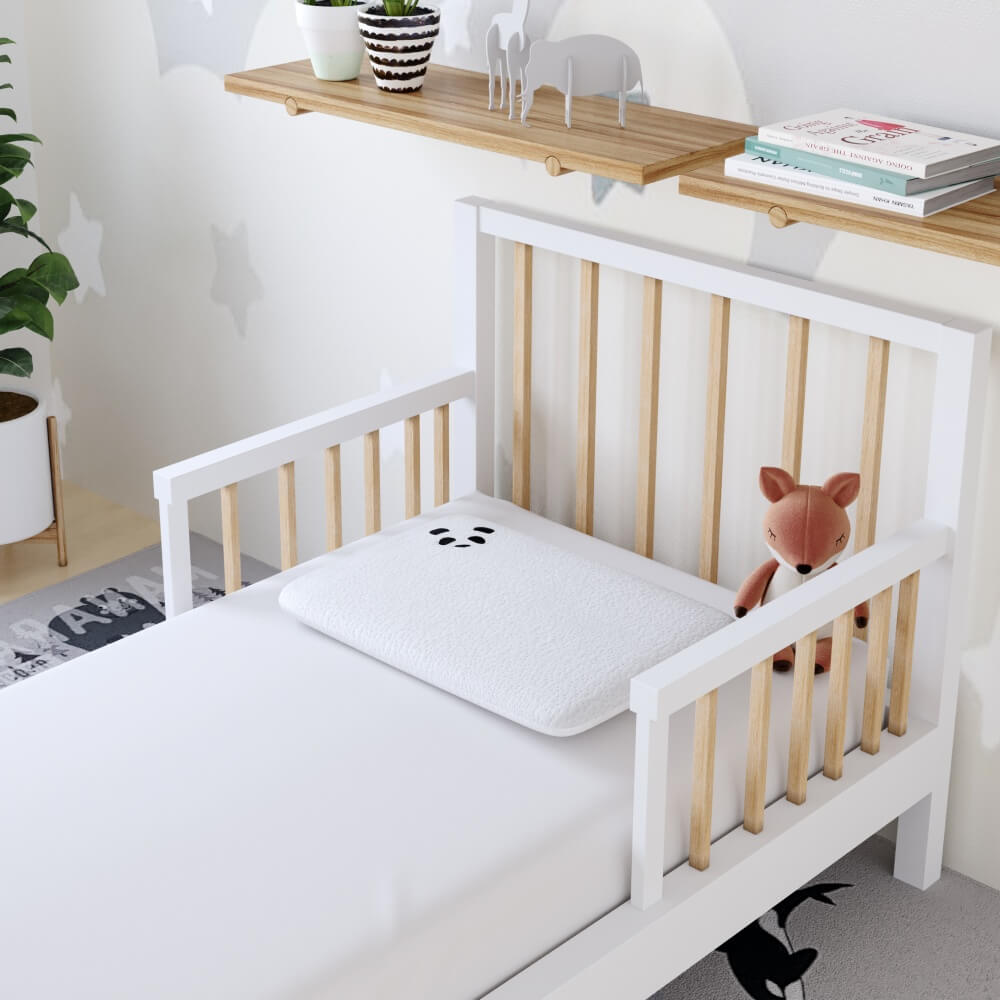
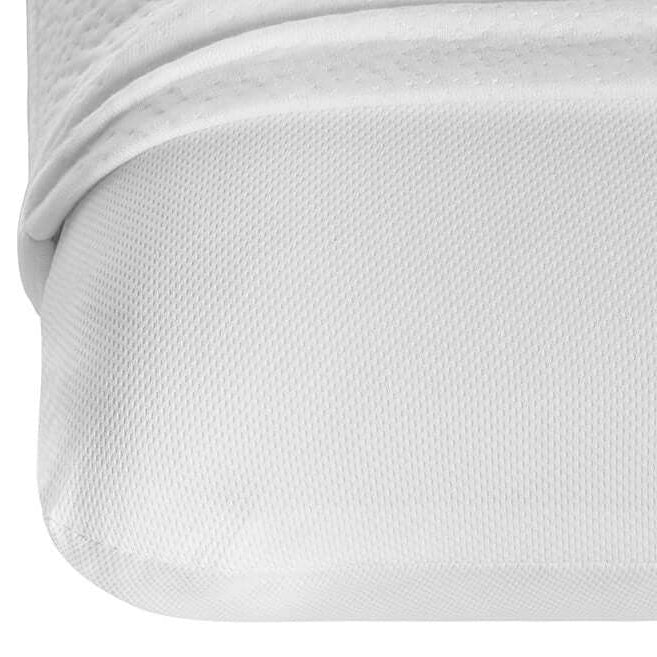
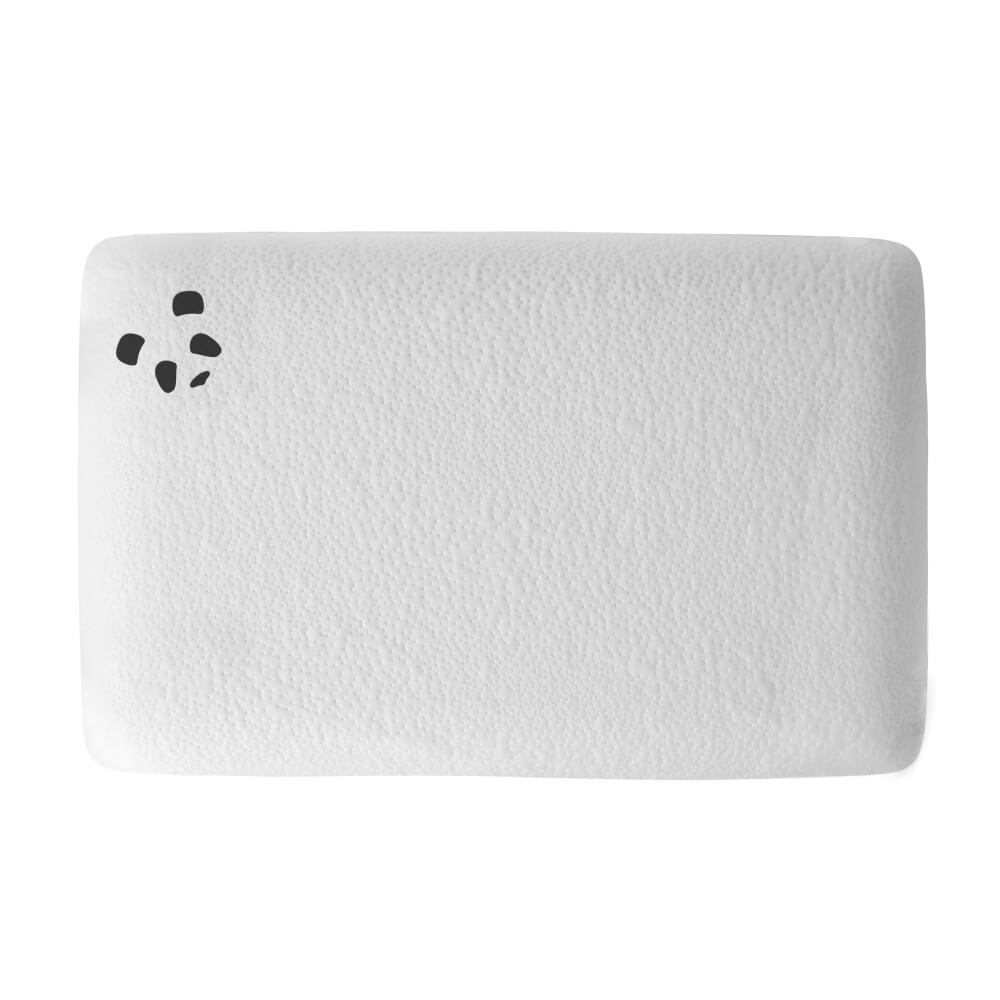
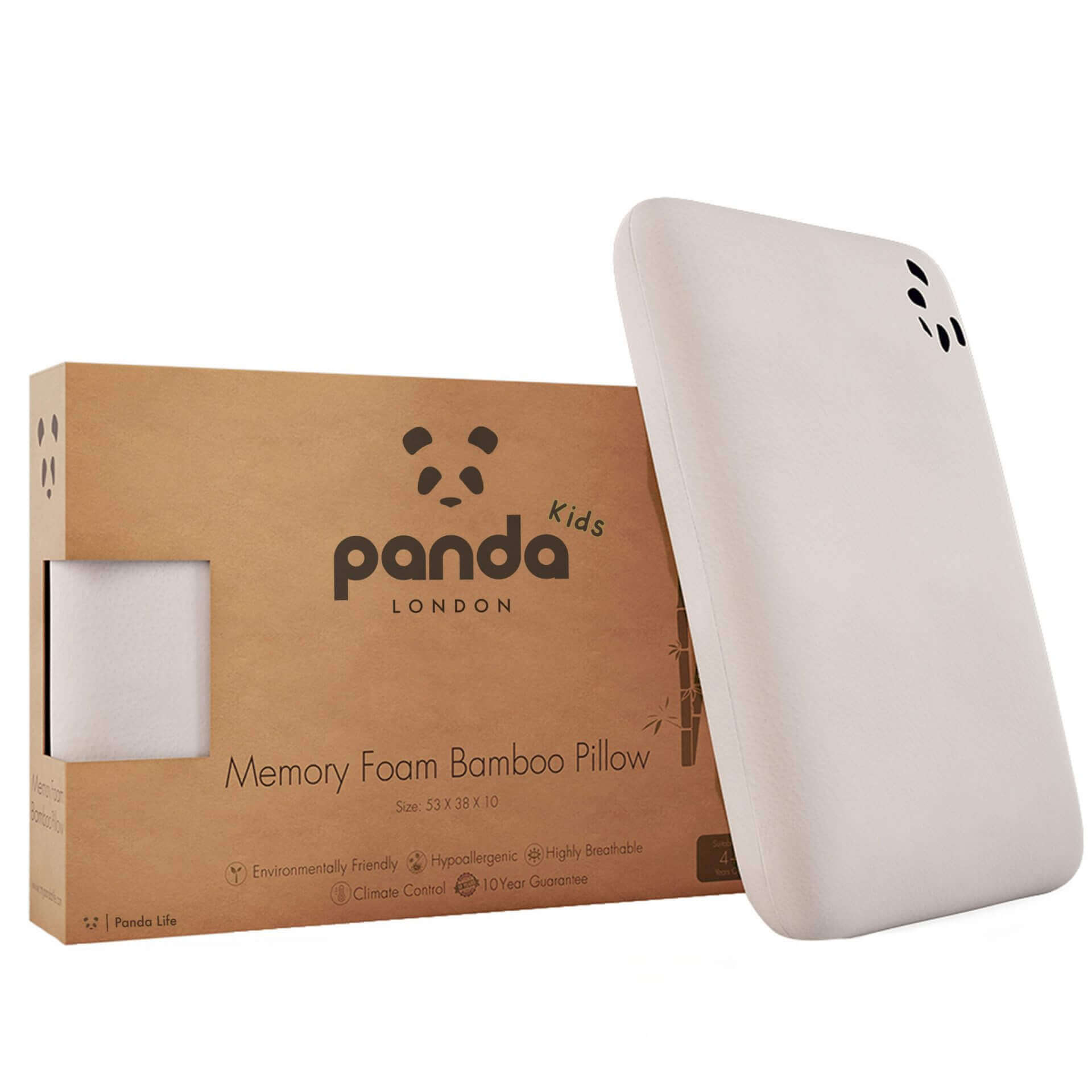
![[Pillowcovers] Pillowcase-Kids-Pillow-White-Background-](http://pandalondon.com/cdn/shop/files/Kids-Pillow-White-Background-Square_jpg.webp?v=1713361847&width=745)
